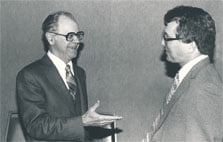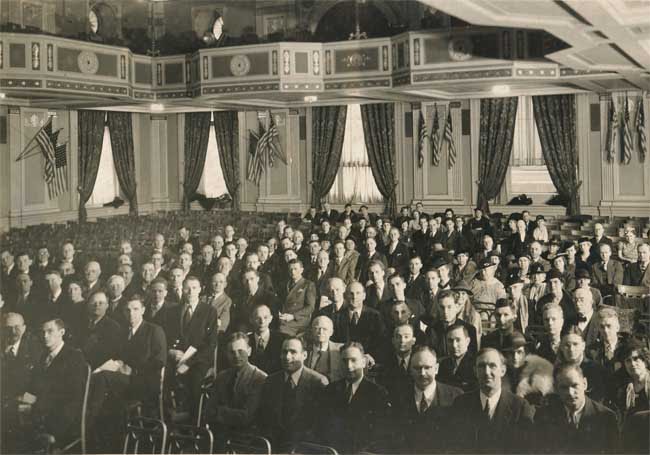This Day in Presbyterian History:
The Death of a Giant
Upon hearing of the sudden death of James M. Boice on June 15, 2000, another pastor prayed in his pastoral prayer the following week in his congregation that he wished the Lord had called him home instead. That stark comment illustrates the appreciation which his fellow pastors and Reformed people everywhere had for the man and ministry.
Dr. James Boice was first and foremost a pastor-teacher. For 32 years, he had fed the people of God at the historic Tenth Presbyterian Church in Philadelphia, Pennsylvania. When countless churches were moving out of the inner city for the suburbs, Dr. Boice and his congregation stayed right where they were to be a witness to downtown Philadelphia. Far from the congregation dwindling, it grew from 350 people in regular attendance to more than 1200 persons in three services. Under his spiritual leadership, and the local Session of Elders, the light of the gospel was extended beyond the congregation, to international students, women with crisis pregnancies, homosexual and HIV positive clients, and the homeless.
His ministry also went beyond the four walls of the church. For a decade, he served as Chairman of the International Council of Biblical Inerrancy. He founded the Alliance of Confession Evangelicals in 1994, calling for a new Reformation among American churches, its pastors and people.
America did not solely have his gifts of teaching either. More than thirty countries of the world had his teaching ministry delivered to them. Yet for many of us, it was his forty books on both Bible books as well as biblical themes which brought the gifts of this man to us. We who were pastors had the privilege of using his biblical commentaries as core books for pulpit series. We knew that there would not be doctrines or practices which would be contrary to either our biblical faith or for that matter, our creedal summaries of doctrine. We could quote from his many pages with complete confidence. Lay people could read for their devotions or Christian sabbath reading his books for their edification. That reading would supplement what their pastors said to them from the pulpit. It was thus a memorable ministry to the people of God in this generation.
Words to Live By: Even though we finite beings on earth have thoughts on when a person’s ministry may be over on that earth, God in His sovereignty is the real source of wisdom on the length of a person’s ministry. And God did exhibit that wisdom in taking James M. Boice home to Himself at the time He did. We still have the benefit of his books which continue to be printed by publishing houses for the church. Get your hands on any of these books, and your hearts and minds will be richly blessed.
For more on the hymns composed by Dr. Boice, click here.
Through the Scriptures: Songs of Solomon 5 – 8
Through the Standards: Judicial law passes away
WCF 19:4
“To them also, as a body politic, He gave sundry judicial laws, which expired together with the state of that people; not obliging any other now, further than the general equity thereof may require.”




